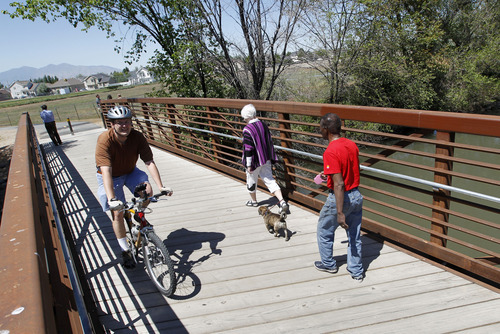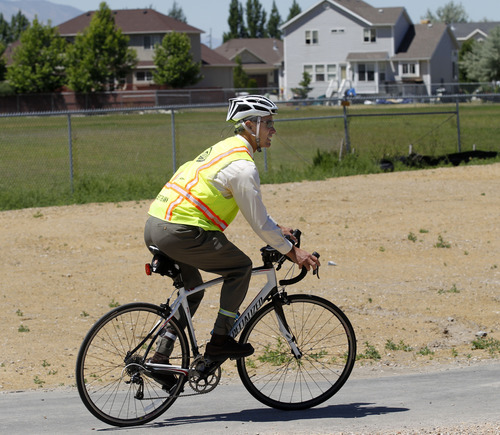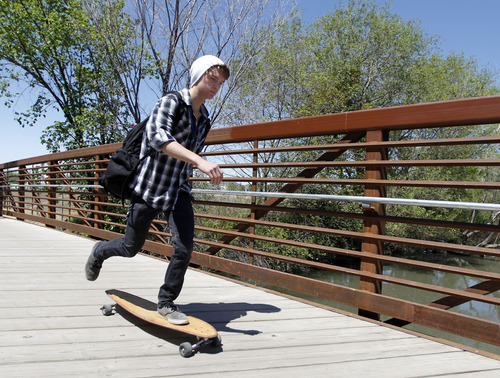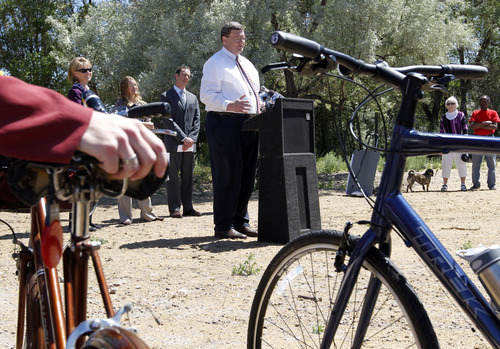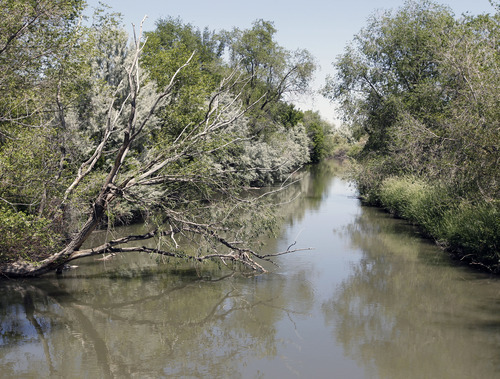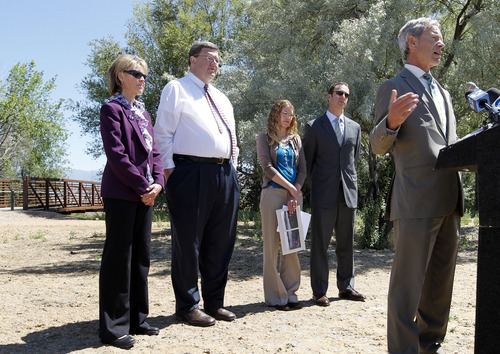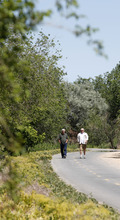This is an archived article that was published on sltrib.com in 2012, and information in the article may be outdated. It is provided only for personal research purposes and may not be reprinted.
An uninterrupted biking/jogging path from Roy in Weber County to Saratoga Springs on the north end of Utah Lake is one step closer to reality.
A recently paved one-mile Salt Lake City stretch of the Jordan River Parkway Trail north of 1800 North near Redwood Road officially opened Thursday, connecting Salt Lake County to Davis County. The route runs into the Legacy Parkway Trail, which, in turn, connects to the Denver & Rio Grande Western Trail to Weber County.
Salt Lake City Mayor Ralph Becker praised the trail for its recreation and transportation value. The bicycle path is part of a larger reclamation project of the Jordan River, which flows from Utah Lake to the Great Salt Lake.
"This is definitely a moment for celebration and a testament to the countless individuals, advocacy groups and government agencies that have been working together for decades to build this incredible regional resource," Becker said.
The uninterrupted trail from North Temple in Salt Lake City to Roy is 35 miles long. It will bring long-term benefits to Salt Lake and Davis county communities, said Salt Lake City Councilman Carlton Christensen.
"We have a lot in common with Davis County," Christensen said. "The trail is a symbol of that."
The bike path is a good commuter route as well as a recreational opportunity that will be recognized nationally, said Davis County Commissioner Louenda Downs.
"People will come to Utah to walk and bike our trails," she said.
There is one segment of the Jordan River Parkway Trail left to complete in Salt Lake City — a 1/2-mile section from 200 South to North Temple. The stretch is problematic because it crosses four rail lines.
There is another unpaved stretch in West Jordan, and two more in Bluffdale.
No schedule has been set for completion of those sections of the route.
As the population grows, the trail will become more important, said Andrew Gruber, executive director of the Wasatch Front Regional Council.
"The population is expected to double in the next 30 years," he said.
"If we can offer [transportation] options, like biking, we can improve traffic and air quality."


